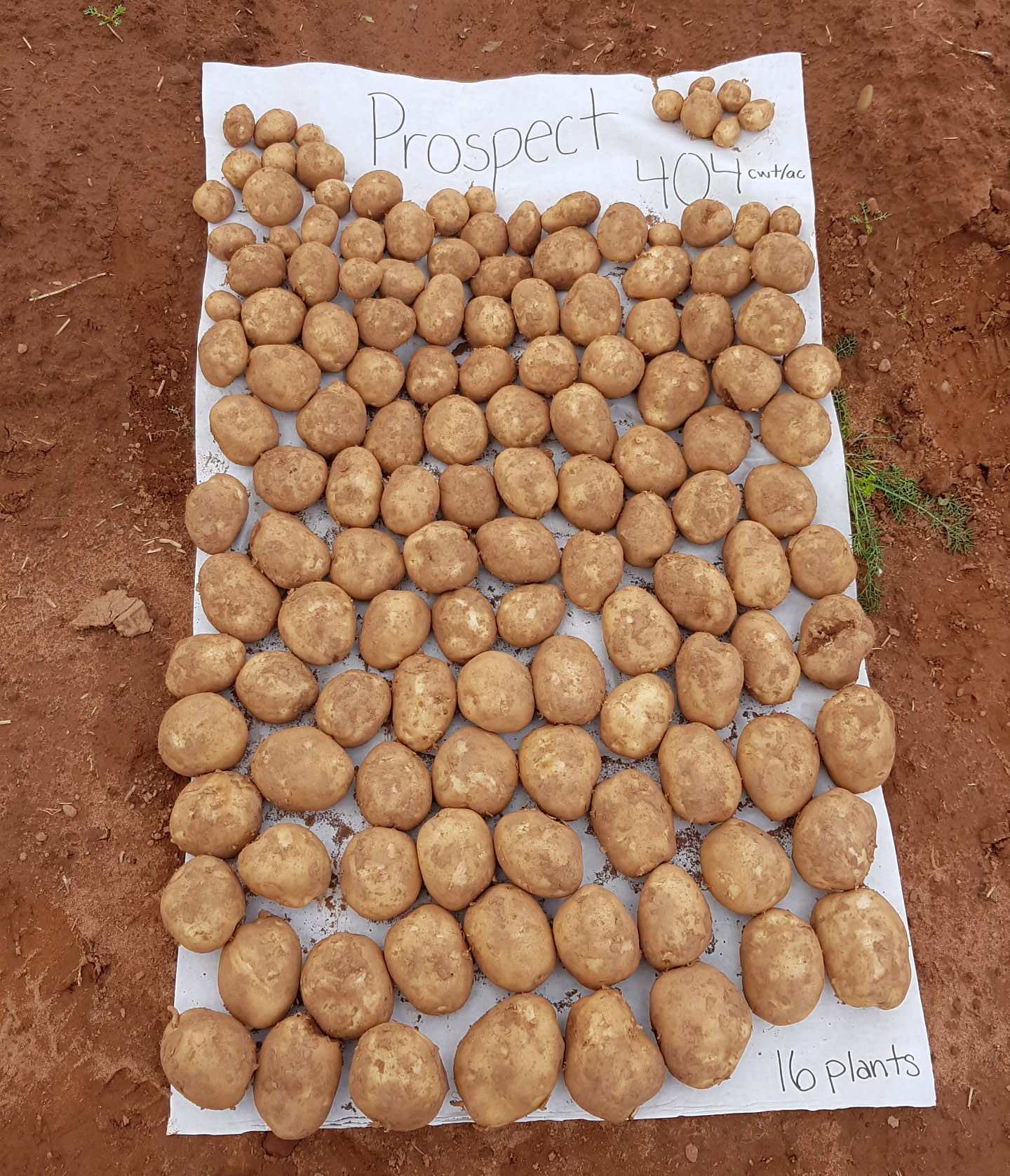
25 Sep Agronomy Updates – Sept 25th
Good morning growers and industry partners,
Well, we didn’t need that rain yesterday, but thankfully the forecast is quite a bit drier for the next 7 days. Some rainfall totals from the past 24 hrs from PEIDAL weather stations:
Mount Royal: 42.8 mm
Kensington: 57.6 mm
Tryon: 36.6 mm
New Glasgow: 46.4 mm
Harrington: 45.0 mm
Johnston’s River: 21.9 mm
Dover: 14.9 mm
Souris: 30.8 mm
From weather stations but reports from farmers, it appears that East Prince had the highest rainfall totals…a lot of reports between 50-60 mm. This now makes more than 300 mm in the past month for a lot of farms.
Dealing with Wet Fields:
So…how does this affect the crop and your preparations for harvest? That’s the key question. A few things to keep in mind:
- Today, keep an eye out for areas in your potato fields where there is still standing water in the rows. Flag these areas and consider harvesting them last or not harvesting them at all if you find evidence of water soak/rot in the tubers. The last thing you want to do is have a small amount of potatoes cause a big problem in the middle of your storage this winter.
If you are storing potentially compromised potatoes, ensure they are at the front of the pile or stored separately, ideally with access to lots of ventilation to dry down those potatoes.
- Pay extra attention to tuber diseases like pink rot and Pythium leak under conditions like this. Make sure you are cutting some potatoes from every load to look for symptoms of these diseases.
- I know this is easier said than done…but try and keep out of fields until they are drier to avoid issues with soil compaction. Compaction is maximized when fields are wet, and it takes years to mitigate soil compaction after you’ve caused it…if you can reverse it at all. Compaction reduces the water holding capacity of your soil as well as reducing pore spaces for air and presenting a barrier to rooting depth, all of which has a detrimental effect on all crops.
To minimize the effect of compaction on your field, keep traffic in the field to the smallest possible area. For example, keep trucks to defined lanes in the field and pay attention to the weight per axle on all equipment in the field.
I know that there is a lot of crop to be harvested and a relatively short window to do it…so I appreciate the need to be realistic. Just look at factoring compaction into your planning when deciding what fields to start harvesting.
Soil Health Testing:
The PEI Analytical Lab is launching its new Soil Health test, which is now commercially available to PEI farmers. This includes not only the standard soil nutrient/organic matter testing that most farmers would be familiar with, but also includes 5 additional tests: soil texture, aggregate stability, soil respiration, active carbon, and biological nitrogen availability.
The value of this test is normally $135.50 + HST per sample, but for a limited time, this PEI Soil Health test will be covered for Island farmers. This means that you only pay for the standard S3 nutrient analysis ($11.00 for farmer rate).
This is a great value for farmers to assess additional soil health metrics in their field at no additional cost. Keep this in mind when planning your soil sampling this fall.
Additional details can be found on the PEI Analytical Lab website or by calling (902) 620-3300.
Pest and Disease Monitoring Update:
- Late blight spores have still not been detected anywhere in PEI this growing season.
- Risk assessments for late blight infection from the AIRspore network show “low risk” for all regions of PEI.
- A few Alternaria (early blight/brown spot) spores are still being found, but conditions are not favourable for Alternaria spread, so is not a major concern.
- Still seeing high spore numbers for Bortrytis across the province…that’s not surprising given the weather we’ve seen in the past couple of weeks. Keep an eye out for grey mold in your fields that are still quite green. Remember that grey mold is often mistaken for late blight…important to tell the difference. Send in samples if you’re not sure.
- I have heard a few reports of rotten/water soaked potatoes, particularly in irrigated fields that then received a lot of rainfall in the past few weeks. Definitely be diligent in looking at your fields and assessing whether you have any compromised tubers.
- There were some reports of damage from the Wed night/Thurs morning frost last week, but generally the consensus seems to be that we were much more fortunate than last year’s killing frost. I’ve heard that Dakota Russets and Prospects took the brunt of the hit from frost, and that Russet Burbanks and some other varieties that were still quite green were not majority affected.
Here’s hoping for some drier weather as folks start to kick harvest into high gear. Please remember to put safety first this harvest season.
Ryan
